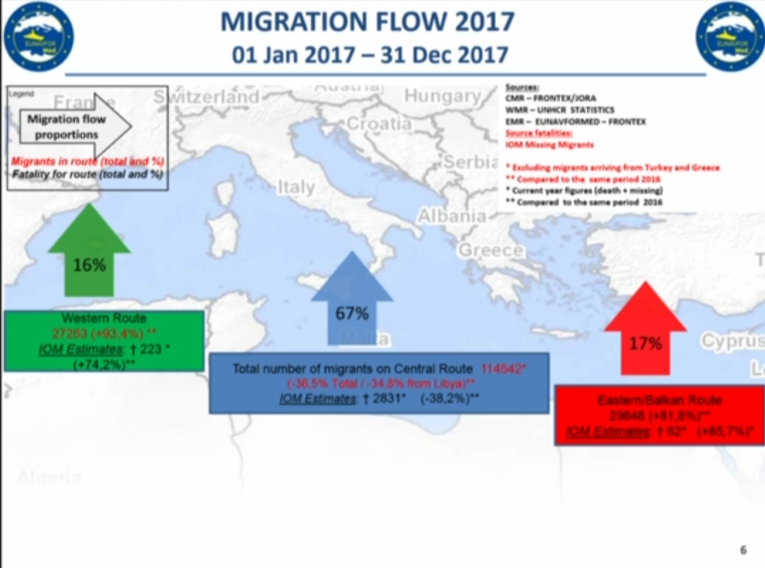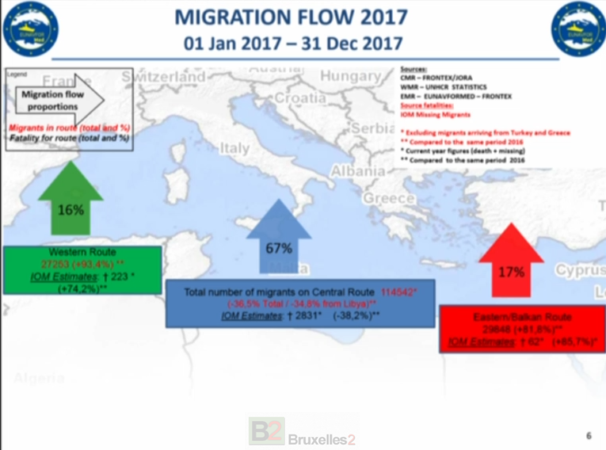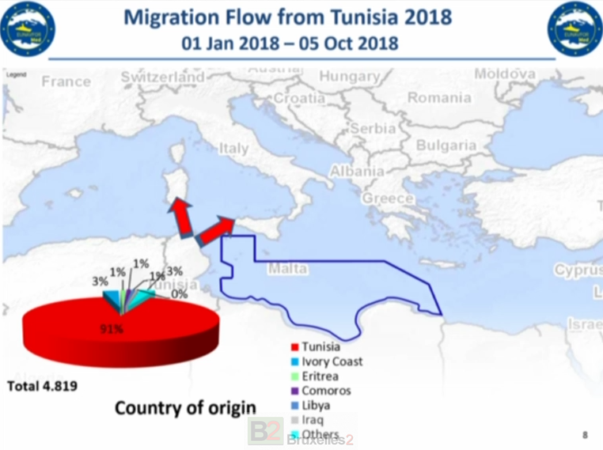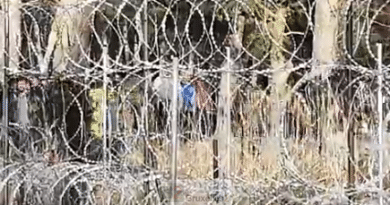The migration goes west
(B2) The latest statistics prove it, the migratory flow has been drastically limited on the central route to Italy, which is no longer the major point of arrival today.
In 2017 most migrants (114.542 or 67%) took the central route to Italy, with significant risks (2831 deaths according to an IOM assessment, i.e. a rate of 2,5%). 28.848 people (17%) went through the eastern route towards Greece and the Balkans, 27.253 people (16%) via the western route towards Spain.
In 2018, the situation has completely changed, the western route to Spain concentrates the majority of migrants (42.470 people, 51% of migrations). The 'East' route via Greece and the Balkans (24.537 people, 28%) is the second route. The central route to Italy remains more minority today (18.322 people, 21%), it has thus regained a rhythm similar to that before the crisis of 2015-2016. However, this road remains very risky with a mortality rate of almost 7% (1260 dead on October 5 according to an estimate by the IOM).
The new fact is the large flow of people coming from Tunisia, and no longer from Libya. About 4819 people - mainly Tunisians (91%) fleeing their country - are heading for the two main Italian islands in the Mediterranean: Sardinia and Sicily.
A road which also remains the deadliest with an estimate of 1260 dead (source OIM)
(NGV)




